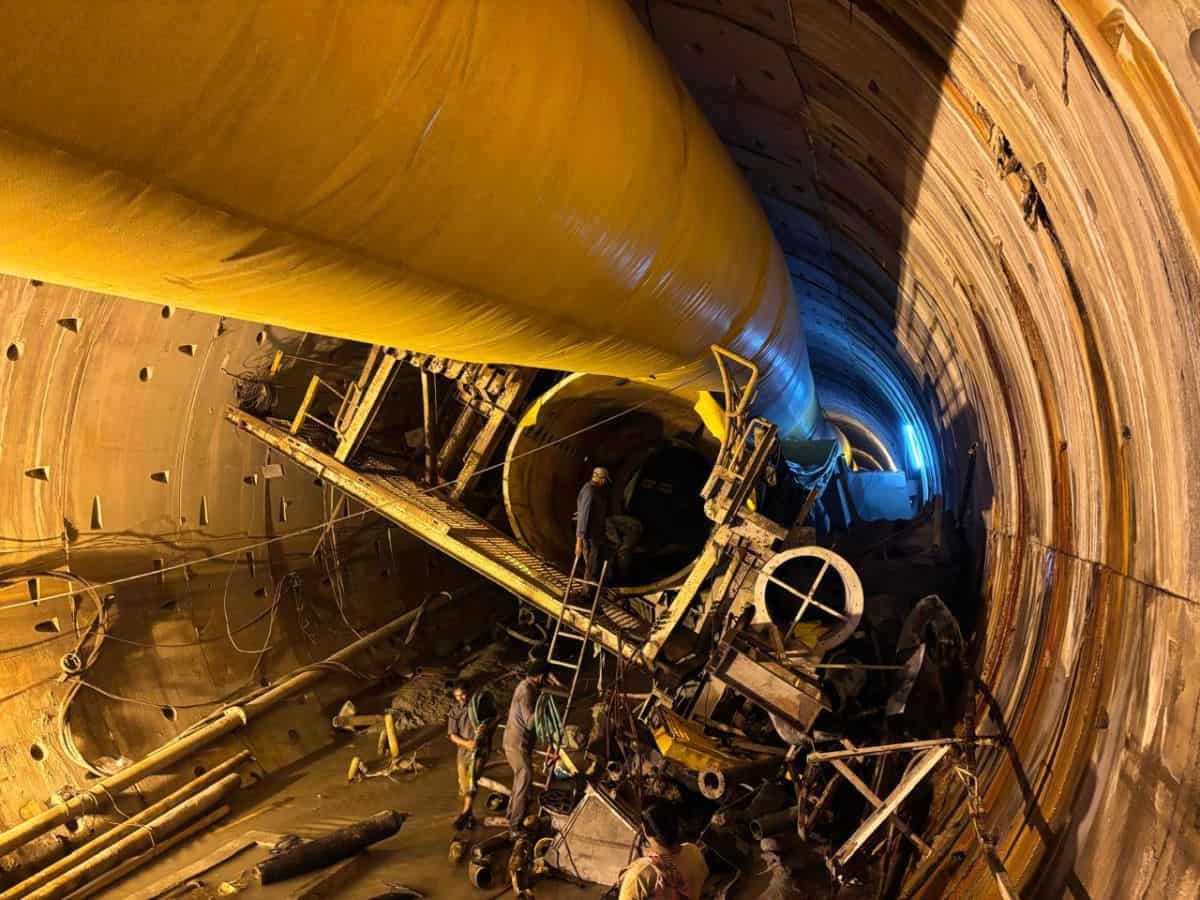
Hyderabad: Bharat Rashtra Samithi (BRS) working president K T Rama Rao (KTR) on Thursday, March 6, attacked the ruling Congress government for continuing work on the Srisailam Left Bank Canal (SLBC) works in spite of a report warning of a potential collapse.
Referring to an article by The Indian Express, which reported that a study on the SLBC tunnel works was submitted to the then Telangana government five years ago, warning of potential accidents. However, it should be noted that in 2020, Telangana was governed by the BRS under former chief minister K Chandrashekar Rao, who also held the irrigation portfolio.
In his latest X post, KTR, said that Amberg Tech AG, a company that surveys tunnelling, had submitted a report titled “Tunnel Seismic Prediction (TSP) – 303 Plus” in January 2020, alerting the government about faulty zones in the ongoing works of the SLBC tunnel.
He accused Telangana chief minister A Revanth Reddy and several ministers for their “selfish gains over workers’ safety, leading to the tragic SLBC tunnel collapse disaster” in Nagarkurnool district on February 22.
“The brazen and blatant disregard for the safety of the workers and public money in the SLBC project is exposed with this report Not one but two reports highlighted the safety issue and even earmarked the exact same place of accident as the ‘Red Zone’! One of the reports stated the same just days before the accident and still the government decided to go ahead with the tunneling work?” KTR’s X post on the SLBC tunnel collapse read.
What does the report on SLBC tunnel say?
The report was submitted to the Telangana Irrigation department warning of a possible “fault zone” in the SLBC tunnel. The fault zone existed between 13.88 km (13,882 m) and 13.91 km (13,914 m) from the mouth of the tunnel, the accident site where eight workers, including two engineers, are now trapped among slush and debris for almost two weeks.
The report on the SLBC tunnel recorded geological observations of reduced rock strength and continuous water seepage, indicating a water-bearing zone along the faulty stretch. These factors clearly suggest a potential tunnel collapse if the area is not repaired in time, The Indian Express reported. It also suggested that sound checks were conducted to understand how the rocks reacted to it.
No sight of any body yet, say SLBC rescue workers
A top rescue operative official told The Indian Express that the SLBC tunnel roof collapsed at least three meters around the fault zone.
Due to the water-bearing zone near the accident site, flooding is frequent, resulting in rescue operations being stopped many times. “The rescue operations are going on after 13.5 km into the tunnel. Here, the tunnel boring machine is stuck at a dead-end, and the workers are nowhere in sight,” the official said.
No comments: Jaiprakash Associates Ltd
Jaiprakash Associates Ltd, a Noida-based company, which was assigned the responsibility of building the SLBC tunnel in 2005, confirmed the report but refused to say anything further. “We have no comments on this,” said an official.
Even Amberg Tech AG declined to comment, stating the report and its data are confidential.
Geological factors behind the SLBC tunnel collapse: Ex-GSI officer
On March 3, Siasat.com quoted a retired scientist from the Geological Survey of India (GSI) that until ten years ago, the GSI used to give technical appraisal for all such projects, which was then discontinued, as almost all the contracting firms were now having their own geological wings comprising experts.
According to a retired scientist, who preferred to remain anonymous, the SLBC tunnel collapse area, which falls under the Amrabad Tiger Reserve (ATR) inside the Nallamala forest, has its crust formed mostly of Srisailam quartzite and granite.
“In these weak spots, highly crumbled stone will be there. The weak point, coupled with the built-up pressure of water which seeped through the earth’s crust and entered the tunnel in massive quantities, could have caused the incident,” the scientist opined about the SLBC tunnel collapse.
He pointed out that even during the construction of the Nagarjunasagar project, such a shear zone was found at its mid-point, where the rectification of the construction works was done by grouting with cement.
“In that project it had an open access, unlike the situation in the SLBC tunnel. I’m sure that pilot holes were dug before the tunnel boring machine entered the SLBC tunnel,” the scientist stated. He observed that the shape of the tunnel itself would act as a support to prevent the collapse in usual circumstances.



